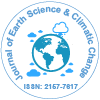Nosso grupo organiza mais de 3.000 Séries de conferências Eventos todos os anos nos EUA, Europa e outros países. Ásia com o apoio de mais 1.000 Sociedades e publica mais de 700 Acesso aberto Periódicos que contém mais de 50.000 personalidades eminentes, cientistas de renome como membros do conselho editorial.
Periódicos de acesso aberto ganhando mais leitores e citações
700 periódicos e 15 milhões de leitores Cada periódico está obtendo mais de 25.000 leitores
Indexado em
- Índice de Fonte CAS (CASSI)
- Índice Copérnico
- Google Scholar
- Sherpa Romeu
- Acesso Online à Pesquisa no Meio Ambiente (OARE)
- Abra o portão J
- Genâmica JournalSeek
- JornalTOCs
- Diretório de Periódicos de Ulrich
- Acesso à Pesquisa Online Global em Agricultura (AGORA)
- Centro Internacional de Agricultura e Biociências (CABI)
- RefSeek
- Universidade Hamdard
- EBSCO AZ
- OCLC – WorldCat
- Convocação de Proquest
- Catálogo online SWB
- Publons
- Euro Pub
- ICMJE
Links Úteis
Diários de acesso aberto
Compartilhe esta página
Abstrato
Comparative Study of Two Geophysical Methods to Investigate the Depth of Weak Zone: A Case Study of Kulekhani-I Hydroelectic Project Dam, Makwanpur, Nepal
Mahendra Acharya, Krishna Kumar Shrestha, Khomendra Bhandari, Asim Timilsina
The stability of the dam is the most crucial factor in the development of hydropower. Traditionally, surface geological mapping and monitoring of the structure's surface behavior are used for stability assessments and investigations. However, those methods frequently offer insufficient details about the subsurface and the stability of the dam's construction. Although there are various geophysical methods available for subsurface investigation, it is unclear which is best depending on the situation, the available resources, and the time and/or money restrictions. Geophysical methods are thought of as cost-effective instruments to offer continuous subsurface information. In order to assess each method's efficacy in providing geological subsurface information about the evaluation of the weak zone of the earth fill dam structure of the Kulekhani Hydroelectric Project, Nepal, two widely used geophysical methods— two-dimensional (2D) resistivity imaging and Micro Tremor Array Measurement (MAM)—were directly compared. The accuracy of these approaches' conclusions about the depth of the weak zone and field functionality was compared. The outcomes showed that the MAM and the 2D resistivity approaches provide precise subsurface information on dam weak zones.
Diários por Assunto
- Agro e Aquicultura
- Alimentação e Nutrição
- Bioquímica
- Ciência da Computação
- Ciência de materiais
- Ciencias ambientais
- Ciências Clínicas
- Ciências Farmacêuticas
- Ciências gerais
- Ciências Médicas
- Ciências Sociais e Políticas
- Ciências veterinarias
- Economia e Contabilidade
- Enfermagem e cuidados de saúde
- Engenharia
- Engenheiro químico
- Física
- Genética e Biologia Molecular
- Geologia e Ciências da Terra
- Gestão de negócios
- Imunologia e Microbiologia
- Informática
- Matemática
- Química
Revistas clínicas e médicas
- Anestesiologia
- Assistência médica
- Biologia molecular
- Cardiologia
- Cirurgia
- Dermatologia
- Diabetes e Endocrinologia
- Doenças infecciosas
- Enfermagem
- Fisioterapia e Reabilitação
- Gastroenterologia
- Genética
- Hematologia
- Imunologia
- Medicamento
- Medicina Reprodutiva
- Microbiologia
- Nefrologia
- Neurologia
- Odontologia
- Oftalmologia
- Oncologia
- Ortopedia
- Pediatria
- Pesquisa Clinica
- Pneumologia
- Psiquiatria
- Toxicologia

 English
English  Spanish
Spanish  Chinese
Chinese  Russian
Russian  German
German  French
French  Japanese
Japanese  Hindi
Hindi